
- HISTORY MAGAZINE

Darwin's first—and only—trip around the world began a scientific revolution
The plants and animals encountered on the five-year voyage of the 'Beagle' provided the foundation for Charles Darwin's theory of evolution.
During August 1831 Charles Darwin , recently graduated from the University of Cambridge, was stuck at home on exactly the same principle, he complained, as a person would choose to remain in a debtors’ prison. At age 22, Darwin was fascinated by the natural world and inspired by the adventure stories of the German naturalist Alexander von Humboldt , whose travels across Central and South America in the early 1800s was the basis of a series of extensive travelogues. Darwin was desperate to undertake a similar scientific odyssey. An attempt to organize an expedition to Tenerife in the Canary Islands off the coast of northwest Africa, had fallen through.

The awful necessity of earning his own living, probably as the vicar of a country parish, seemed inescapable. And then a letter arrived offering Darwin an amazing opportunity. The writer was one of Darwin’s former teachers, John Stevens Henslow, professor of botany at Cambridge. Henslow informed Darwin that he had recommended him to accompany Captain Robert FitzRoy on an expedition aboard the H.M.S. Beagle . He wrote: “I state this not on the supposition of yr. being a finished Naturalist, but as amply qualified for collecting, observing, & noting any thing worthy . . . in Natural History.”
Robert FitzRoy was an aristocratic but mercurial naval captain. In 1826 he had set off as a crew member on the Beagle to carry out a survey of South America. In the course of the voyage, he was placed in command of the expedition, from which he returned in 1830. The letter from Henslow to Darwin was written as FitzRoy was under instructions from the Admiralty to mount a second survey expedition to Tierra del Fuego, an archipelago at the tip of South America. The primary motive of the voyage was to chart the coast of South America. A secondary motive was scientific exploration. FitzRoy wanted a naturalist aboard, both to carry out scientific work and to keep him company.

Despite Henslow’s recommendation, however, Darwin’s place was not immediately assured. FitzRoy’s first impression of the young naturalist was not entirely favorable. Darwin’s father expressed skepticism at the expense and dangerous nature of the venture. The Beagle was the overcrowded home to a total crew of 74. Shipwreck was a common hazard, death through disease an even greater one, and much of South America was lawless. To try to convince his father, Darwin sought help from his mother’s brother, the industrialist Josiah Wedgwood II. Wedgwood’s daughter Emma had been a childhood friend of Darwin’s, and the two first cousins would later marry, in 1839.

Setting sail
In the end both FitzRoy and his father were persuaded that he should go, and on December 27, 1831, the Beagle sailed out of Plymouth with Darwin on board. Originally planned for two years, the voyage stretched to five, and took Darwin not only to South America but to Tahiti, Australia, New Zealand, Africa, and many of the Atlantic and Pacific islands in between. Darwin often left the ship to travel hundreds of miles on horseback.
Life aboard the Beagle

First launched in 1820, the Beagle started life as a brig (a swift two-masted vessel), 90 feet long and 25 feet wide. It was reconditioned as a three-masted bark in 1825, and later set off to South America under the command of Pringle Stokes. Stokes died during the mission, and Robert FitzRoy took command. On the Beagle’ s return in 1830, it was remodeled again for a second surveying expedition in which Darwin would participate (1831-36); the route would take the Beagle to South America and then make a circumnavigation of the globe.
The 74-person crew for this second voyage consisted of officers, midshipmen, sailors and porters, and marines, who all formed the naval crew; in addition, there were nine noncommissioned members, including Darwin. It was a large crew for a ship of such modest dimensions, as Darwin wrote: “The vessel is a very small one . . . but every body says it is the best sort for our work . . . The want of room is very bad, but we must make the best of it.”
Darwin spent most of his time in the stern where Captain FitzRoy’s cabin was located. Darwin’s cabin was outfitted with a folding bunk and bookshelves. He also had a chest in which to store the samples collected ashore. Darwin soon felt at ease on the Beagle. He wrote in February 1832: “I find to my great surprise that a ship is singularly comfortable for all sorts of work. Everything is so close at hand, & being cramped, make one so methodical, that in the end I have been a gainer. I already have got to look at going to sea as a regular quiet place, like going back to home after staying away from it.”
In the course of this extraordinary journey, he filled notebook after notebook with sketches and observations. Darwin shipped home barrels, boxes, and bottles by the dozen, filled with pressed plants, fossils, rocks, skins, and skeletons. He explored landscapes that ranged from the gray desolation of the Falklands to the glorious heights of the Andes, from the wild glaciated cliffs of the Beagle Channel to the beaches of Tahiti, from the tropical lushness of Rio to the dripping rainforest of southern Chile.
Introducing Nat Geo Kids Book Bundle!
Early observations.
First landfall was the volcanic island of St. Jago (now Santiago) in the Cape Verde Islands. After three weeks of seasickness, Darwin threw himself enthusiastically into his first independent fieldwork, identifying rock samples and recording a cross section of the volcanic strata. He had the best equipment he could buy: a microscope, a clinometer for measuring angles, geological hammers, and a vasculum (a container for botanical specimens), but he was still a novice. He boasted in a letter to his Cambridge teacher, John Stevens Henslow, that his discovery of a color-changing octopus “appears to be new.” It wasn’t, and Henslow gently disabused him. ( Here's how animals are able to manipulate their color. )

By February 15, 1832, they were resupplying on the remote rocky islets of St. Paul’s, and two weeks later, the Beagle crossed the Equator and reached the coast of Brazil. Darwin, however, injured in the final leg of the journey, was forced to stay on board, so it was April before he first set foot in South America, at Botafogo Bay near Rio de Janeiro.
For the next few months as the crew of the Beagle sailed up and down the coast checking and rechecking naval charts, Darwin stayed ashore, happily exploring the Corcovado mountains near Rio, shifting from geology to zoology and building an impressive collection of spiders and wasps .
A man of letters

During the Beagle ’s voyage, Darwin famously amassed a huge scientific collection of plants and animals, but another important legacy is his prolific and detailed correspondence with family and friends. The letters reflect Darwin’s mood over the five years of the voyage and—despite the ups and downs—suggest he was never disheartened. His words to his loved ones also expose the man behind the scientist. His humanity and personality quirks are on full display—from delighting in his private cabin on the ship to asking his sisters to mail him more “Prometheans,” or matches.
The ship went south again at the end of June. This time he went, too, encountering porpoises, whales, penguins, and seals. The expedition dropped anchor at the end of July at the mouth of the majestic Río de la Plata. Both Montevideo on the north bank, where they helped put down a revolt, and Buenos Aires on the south bank, where they were fired on as suspected cholera-carriers, were dangerous places. The flat and empty landscape seemed to Darwin a poor exchange for the lushness of the tropics. (Related: The tropics are home to 80 percent of the world's species, but they're losing wildlife fast. )
All the while, Darwin’s collections were annoying the ship’s purser who complained about the clutter. Darwin had already learned some taxidermy, and now experimented with other ways of preserving unfamiliar specimens using wax, spirits, and thin sheets of lead—with mixed results. ( See how one museum moved hundreds of taxidermy animals. )
Darwin's birds

The first letters from home brought criticism and advice from Henslow, on whose doorstep Darwin’s treasures were landing. It is another reminder of how Darwin's voyage was a learning experience: His labels weren’t securely fixed, beetles had been crushed, mice had gone moldy, and one mystery bottle looked like “the remains of an electric explosion, a mere mass of soot.”
By September 1832 they were surveying the coast of Argentina. Already a good shot, Darwin learned to use a bola (a weighted lasso) to bring down ostriches and took time off from “admiring the Spanish ladies” to discover his first large fossilized vertebrate—a Megatherium, an extinct species of giant ground sloth. Darwin’s curiosity was piqued by its similarity to a species of agouti, a rodent native to South America. In November he returned to Buenos Aires to restock for the voyage to Cape Horn.

A year after leaving home, the Beagle , like the Endeavour of Captain Cook and Joseph Banks before it, finally anchored in the Bay of Good Success on the coast of Tierra del Fuego. It was magnificent but inhospitable country. They spent Christmas on Hermit Island, just west of the cape, but were repeatedly beaten back by gales. One of their whaleboats was smashed against the ship in a storm, and Darwin lost notes and specimens.
After arriving at Ponsonby Sound, FitzRoy and some of the crew, including Darwin, headed off in two of the ship’s boats on a 300-mile round trip to chart the farther reaches of the Beagle Channel, named for FitzRoy’s first adventures there. It was spectacular country. Darwin’s letters home glitter with descriptions of the glaciers’ beauty. But they were dangerous as well: When a large sheet of ice crashed into the water sending a surge along the shore toward their boats, it was Darwin who led the desperate race to drag them to safety. FitzRoy named the place Darwin Sound in his honor.
Reptilian relationships

On April 18, 1835 Darwin wrote a long letter from Valparaíso (Chile) to his friend and former teacher, the botanist and geologist John Stevens Henslow. He described the local lizards and invited his colleagues’ opinions. Darwin's methodical approach to research and his generosity and openness to academic cooperation is on full display: “I also send a small bottle with 2 Lizards: one of them is Viviparous, as you will see by the accompanying notice.” Darwin had heard of a French scholar who had found a similar lizard, so he urged his friend to “hand over the Specimens to some good Lizardologist & Comparative Anatomist to publish an account of their internal structure.”
Foiled in their attempt to round the cape, they sailed east and on March 1, 1833, arrived at the Falkland Islands where the navy was keen to discover safe harbors. Concerned that the Beagle crew alone could not complete their mission, FitzRoy bought another boat: the Adventure. Both ships returned in April to Montevideo, where Darwin set off on his first long inland expedition, accompanied by the Beagle’ s cabin boy, Syms Covington, whom Darwin had hired as combined servant and research assistant. They did not rendezvous with the ship until September, in Buenos Aires.
Rounding the Cape
Both the Beagle and the Adventure headed south in December, retracing the route of the previous year as far as Tierra del Fuego. There, Darwin finally found something he had been looking for: a new species of rhea (originally named Rhea darwinii ), an ostrich-like bird—but only after half of it had been eaten for the crew’s dinner.
By March 1834 they were once again forced to head back to the Falklands without rounding the cape. The Beagle’ s keel had been badly damaged, so by the middle of April it was beached at the mouth of the Rio Santa Cruz for repairs. FitzRoy took advantage of the opportunity to mount an expedition upriver. They rowed and dragged the boats 140 miles through uncharted territory. It took three weeks to go up and three days to sail back down, Darwin all the while was adding to his observations. ( These scientists spent months exploring the Okavango delta. )
Darwin's fossils

After the Beagle was repaired, it made a third attempt to round the cape. Perhaps the third time was the charm, because this time they made it. In June 1834 the expedition finally reached the west coast of South America.
The next year was spent following the coastline of Chile and Peru in much the same manner as the previous two and a half years had been spent in Brazil, Uruguay, and Argentina: The Beagle followed a switchback course, surveying and resurveying the complex archipelago of the coastline.
Darwin loathed the incessantly dripping and impenetrable temperate rainforest of southern Chile, and was frequently absent organizing his own inland expeditions. He traveled southeast through the Andes from the colonial elegance of Valparaíso to Santiago. It was largely uncharted, so he relied on the help of locals who drew maps, advised on safe routes, and helped hire guides and horses. One looked after him for several weeks when he fell dangerously ill, probably with typhoid fever. Meanwhile FitzRoy felt isolated, overworked, and depressed. The Admiralty’s unwillingness to shoulder the cost of the Adventur e forced him to sell the ship, after which he threatened to resign. The future of the voyage hung in the balance.

Darwin made one more major land expedition, traveling 220 miles from Valparaíso through the Andes to Coquimbo and Copiapó, before rejoining the Beagle to sail to Iquique in Peru. From Lima they sailed west at the end of July 1835 and arrived at the Galápagos archipelago in mid-September.
You May Also Like

Beyond the Western myth of exploration lies a rich and often overlooked history

These 5 explorers disappeared into thin air. Will we ever know the truth?

He’s called ‘omacha,’ a dolphin that transforms into a man. Why?
They spent five weeks exploring the islands, each with its own distinctive flora and fauna. Darwin, still months from forming even a rudimentary theory on how species might evolve over time, filed new facts away with each species he came across. Although the Galápagos, and their finches and great tortoises are closely connected in the popular imagination with the origins of his ideas about species change, Darwin did not conceive of his famous hypothesis on that visit. ( Turns out Galápagos tortoises migrate—just very slowly. )

Darwin’s observations on this trip led to a different grand, scientific theory. In the Andes, in the Uspallata Pass, he had noticed something curious: fossilized trees that he realized must once have been submerged in the sea. The question in Darwin’s mind was how had they been raised so high up in the mountains.
On January 19, 1835, while Darwin was exploring inland, the Beagle crew had witnessed the eruption of the Osorno Volcano in Chile. A month later, farther up the coast, an earthquake struck and caused a tidal wave. Darwin began to speculate that the events might be connected. FitzRoy reviewed earlier soundings and confirmed the height of the land had changed. Armed with this information, Darwin proposed a theory of continental-scale fall and uplift, with tiny changes working over eons to create dramatic landscapes like those in the Andes.

With this in mind, when they arrived in Tahiti and Darwin saw his first coral reef, he proposed a brilliant new solution to the mystery of how such reefs were formed. His letters describing his ideas were, unbeknownst to him, appearing in scientific journals, and he would return with an already established scientific reputation. But he wasn’t home yet. As they sailed west from the coast of Africa, FitzRoy had found errors in the very first charts they had made, and diverted across the Atlantic to resurvey the coast of Brazil.
The Beagle finally docked at Falmouth on October 2, 1836. Darwin never left Britain again, but he maintained a robust correspondence with his colleagues all over the world about the work done on the voyage. He went on to publish more than 20 articles from his notes and diaries written aboard the Beagle. He published books, became a best-selling travel writer, and a leading scientist.
Evolution of a theory

It is likely that during his trip aboard the Beagle Darwin may have already been beginning to sketch a first outline of his theory of evolution. Immediately after returning to London, he began to work on the theory in earnest, albeit secretly, in his private notebooks. He drafted a first brief treatise that he kept hidden for fear of the scandal it would provoke. As early as 1837 (a year after his return on the Bea- gle ), he drew a “tree of life” to illustrate the evolution—or “transmutation” as he then termed it—of species. It was not until 1859 that Darwin published the final version of his theory, spurred to do so by the publication of similar ideas by the English naturalist Alfred Russel Wallace.
The work of identifying hundreds of specimens was parceled out to others, many of whom became lifelong friends and colleagues. Although not conceived during the voyage, Darwin’s ideas about species change were born not only out of his encounters with so many different plants and animals (including humans), but, most importantly, through the opportunity to see them in all the complexity of their shared habitats. Many years later, Darwin had no hesitation in declaring the voyage of the Beagle the single most important event of his life.
Related Topics
- SPECIES DISCOVERY
- JUNGLE EXPLORATION
- LAND EXPLORATION

Who were the original 49ers? The true story of the California Gold Rush

Magellan got the credit, but this man was first to sail around the world

New fossils reveal one of the smallest titanosaurs ever found

The ultimate Costa Rican adventure, from white-water rafting to jungle trekking

The 11 most astonishing scientific discoveries of 2023
- Environment
- Paid Content
- Photography
History & Culture
- History & Culture
- History Magazine
- Mind, Body, Wonder
- Terms of Use
- Privacy Policy
- Your US State Privacy Rights
- Children's Online Privacy Policy
- Interest-Based Ads
- About Nielsen Measurement
- Do Not Sell or Share My Personal Information
- Nat Geo Home
- Attend a Live Event
- Book a Trip
- Inspire Your Kids
- Shop Nat Geo
- Visit the D.C. Museum
- Learn About Our Impact
- Support Our Mission
- Advertise With Us
- Customer Service
- Renew Subscription
- Manage Your Subscription
- Work at Nat Geo
- Sign Up for Our Newsletters
- Contribute to Protect the Planet
Copyright © 1996-2015 National Geographic Society Copyright © 2015-2024 National Geographic Partners, LLC. All rights reserved
HMS Beagle: Darwin’s Trip around the World
Charles Darwin sailed around the world from 1831–1836 as a naturalist aboard the HMS Beagle . His experiences and observations helped him develop the theory of evolution through natural selection.
Biology, Geography, Earth Science, Geology, Ecology
Loading ...
Idea for Use in the Classroom
Charles Darwin set sail on the ship HMS Beagle on December 27, 1831, from Plymouth, England. Darwin was 22 years old when he was hired to be the ship’s naturalist . Most of the trip was spent sailing around South America. There Darwin spent considerable time ashore collecting plants and animals. Darwin filled notebooks with his observations of plants, animals, and geology . The trip was an almost five-year adventure and the ship returned to Falmouth, England, on October 2, 1836.
Throughout South America, Darwin collected a variety of bird specimens . One key observation Darwin made occurred while he was studying the specimens from the Galapagos Islands. He noticed the finches on the island were similar to the finches from the mainland, but each showed certain characteristics that helped them to gather food more easily in their specific habitat. He collected many specimens of the finches on the Galapagos Islands. These specimens and his notebooks provided Darwin with a record of his observations as he developed the theory of evolution through natural selection .
Have students work in pairs to use the map and the resources in the explore more tab to create a social media feed that includes five dates and posts from the expedition. Students may need to conduct additional research to ensure their proposed posts are factual and something Darwin would have seen on the trip. Help students brainstorm ideas for their posts by asking: What types of animals would Darwin have seen? Are any of them extinct today? What types of plants did he note? What types of geology did he see? What would you imagine some of the hardships the explorers would have encountered on this voyage?
Articles & Profiles
Media credits.
The audio, illustrations, photos, and videos are credited beneath the media asset, except for promotional images, which generally link to another page that contains the media credit. The Rights Holder for media is the person or group credited.
Production Managers
Program specialists, last updated.
October 19, 2023
User Permissions
For information on user permissions, please read our Terms of Service. If you have questions about how to cite anything on our website in your project or classroom presentation, please contact your teacher. They will best know the preferred format. When you reach out to them, you will need the page title, URL, and the date you accessed the resource.
If a media asset is downloadable, a download button appears in the corner of the media viewer. If no button appears, you cannot download or save the media.
Text on this page is printable and can be used according to our Terms of Service .
Interactives
Any interactives on this page can only be played while you are visiting our website. You cannot download interactives.
Related Resources
Charles Darwin and His Voyage Aboard H.M.S. Beagle
The Young Naturalist Spent Five Years on a Royal Navy Research Ship
Bettmann/Contributor/Getty Images
- Important Historical Figures
- U.S. Presidents
- Native American History
- American Revolution
- America Moves Westward
- The Gilded Age
- Crimes & Disasters
- The Most Important Inventions of the Industrial Revolution
- African American History
- African History
- Ancient History and Culture
- Asian History
- European History
- Latin American History
- Medieval & Renaissance History
- Military History
- The 20th Century
- Women's History
The History of H.M.S. Beagle
Gentleman passenger, darwin invited to join the voyage in 1831, departs england on december 27, 1831, south america from february 1832, the galapagos islands, september 1835, circumnavigating the globe, back home october 2, 1836, organizing specimens and writing, the theory of evolution.
:max_bytes(150000):strip_icc():format(webp)/McNamara-headshot-history1800s-5b7422c046e0fb00504dcf97.jpg)
Charles Darwin’s five-year voyage in the early 1830s on H.M.S. Beagle has become legendary, as insights gained by the bright young scientist on his trip to exotic places greatly influenced his masterwork, the book " On the Origin of Species ."
Darwin didn’t actually formulate his theory of evolution while sailing around the world aboard the Royal Navy ship. But the exotic plants and animals he encountered challenged his thinking and led him to consider scientific evidence in new ways.
After returning to England from his five years at sea, Darwin began writing a multi-volume book on what he had seen. His writings on the Beagle voyage concluded in 1843, a full decade and a half before the publication of "On the Origin of Species."
H.M.S. Beagle is remembered today because of its association with Charles Darwin , but it had sailed on a lengthy scientific mission several years before Darwin came into the picture. The Beagle, a warship carrying ten cannons, sailed in 1826 to explore the coastline of South America. The ship had an unfortunate episode when its captain sank into a depression, perhaps caused by the isolation of the voyage, and committed suicide.
Lieutenant Robert FitzRoy assumed command of the Beagle, continued the voyage and returned the ship safely to England in 1830. FitzRoy was promoted to Captain and named to command the ship on a second voyage, which was to circumnavigate the globe while conducting explorations along the South American coastline and across the South Pacific.
FitzRoy came up with the idea of bringing along someone with a scientific background who could explore and record observations. Part of FitzRoy’s plan was that an educated civilian, referred to as a “gentleman passenger,” would be good company aboard ship and would help him avoid the loneliness that seemed to have doomed his predecessor.
Inquiries were made among professors at British universities, and a former professor of Darwin’s proposed him for the position aboard the Beagle.
After taking his final exams at Cambridge in 1831, Darwin spent a few weeks on a geological expedition to Wales. He had intended to return to Cambridge that fall for theological training, but a letter from a professor, John Steven Henslow, inviting him to join the Beagle, changed everything.
Darwin was excited to join the ship, but his father was against the idea, thinking it foolhardy. Other relatives convinced Darwin’s father otherwise, and during the fall of 1831, the 22-year-old Darwin made preparations to depart England for five years.
With its eager passenger aboard, the Beagle left England on December 27, 1831. The ship reached the Canary Islands in early January and continued onward to South America, which was reached by the end of February 1832.
During the explorations of South America, Darwin was able to spend considerable time on land, sometimes arranging for the ship to drop him off and pick him up at the end of an overland trip. He kept notebooks to record his observations, and during quiet times on board the Beagle, he would transcribe his notes into a journal.
In the summer of 1833, Darwin went inland with gauchos in Argentina. During his treks in South America, Darwin dug for bones and fossils and was also exposed to the horrors of enslavement and other human rights abuses.
After considerable explorations in South America, the Beagle reached the Galapagos Islands in September 1835. Darwin was fascinated by such oddities as volcanic rocks and giant tortoises. He later wrote about approaching tortoises, which would retreat into their shells. The young scientist would then climb on top, and attempt to ride the large reptile when it began moving again. He recalled that it was difficult to keep his balance.
While in the Galapagos Darwin collected samples of mockingbirds, and later observed that the birds were somewhat different on each island. This made him think that the birds had a common ancestor, but had followed varying evolutionary paths once they had become separated.
The Beagle left the Galapagos and arrived at Tahiti in November 1835, and then sailed onward to reach New Zealand in late December. In January 1836 the Beagle arrived in Australia, where Darwin was favorably impressed by the young city of Sydney.
After exploring coral reefs, the Beagle continued on its way, reaching the Cape of Good Hope at the southern tip of Africa at the end of May 1836. Sailing back into the Atlantic Ocean, the Beagle, in July, reached St. Helena, the remote island where Napoleon Bonaparte had died in exile following his defeat at Waterloo. The Beagle also reached a British outpost on Ascension Island in the South Atlantic, where Darwin received some very welcome letters from his sister in England.
The Beagle then sailed back to the coast of South America before returning to England, arriving at Falmouth on October 2, 1836. The entire voyage had taken nearly five years.
After landing in England, Darwin took a coach to meet his family, staying at his father’s house for a few weeks. But he was soon active, seeking advice from scientists on how to organize specimens, which included fossils and stuffed birds, he had brought home with him.
In the following few years, he wrote extensively about his experiences. A lavish five-volume set, "The Zoology of the Voyage of H.M.S. Beagle," was published from 1839 to 1843.
And in 1839 Darwin published a classic book under its original title, "Journal of Researches." The book was later republished as " The Voyage of the Beagle ," and remains in print to this day. The book is a lively and charming account of Darwin’s travels, written with intelligence and occasional flashes of humor.
Darwin had been exposed to some thinking about evolution before embarking aboard H.M.S. Beagle. So a popular conception that Darwin’s voyage gave him the idea of evolution is not accurate.
Yet is it true that the years of travel and research focused Darwin's mind and sharpened his powers of observation. It can be argued that his trip on the Beagle gave him invaluable training, and the experience prepared him for the scientific inquiry that led to the publication of "On the Origin of Species" in 1859.
- Charles Darwin's Finches
- Biography of Charles Darwin, Originator of the Theory of Evolution
- What Was the Age of Exploration?
- World History Timeline From 1830 to 1840
- The Legacy of Darwin's "On the Origin of Species"
- Charles Darwin WebQuest
- Evidence Darwin Had for Evolution
- An Overview of the Galapagos Islands
- 8 People Who Influenced and Inspired Charles Darwin
- How Artificial Selection Works With Animals
- The 5 Types of Selection
- Biography of Ferdinand Magellan, Explorer Circumnavigated the Earth
- Interesting Facts About Charles Darwin
- Biography and Legacy of Ferdinand Magellan
- What Is Darwinism?
July 22, 2019
The Voyage of the Beagle and the Future of Space Science
NASA is building a launch system that could lead to discoveries as profound as what Darwin learned during his journey on a British navy vessel
By Heidi B. Hammel & Matt Mountain
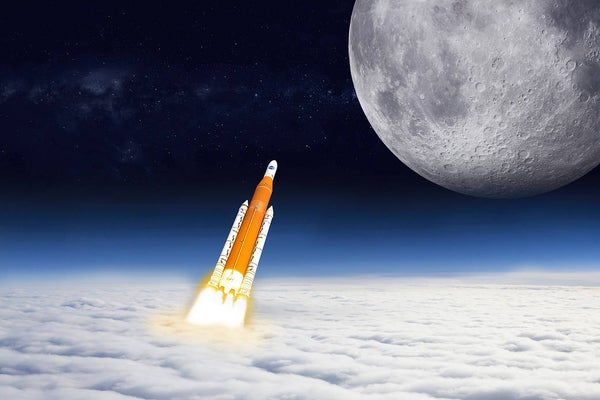
Artist's rendering of NASA future Space Launch System (SLS).
This article was published in Scientific American’s former blog network and reflects the views of the author, not necessarily those of Scientific American
In 1820, the British Royal Navy was the largest in the world, with so many ships that one extra 10-gun brig-sloop lay idle for more than half a decade before it was refitted to conduct hydrographic surveys. She embarked on several voyages, but it was her second trip that catapulted the ship into world-wide renown. Nearly 200 years later schoolchildren learn her name in history and biology classes.
That ship was the H.M.S Beagle —built for one mission but repurposed to do another.
On its second voyage, the Beagle hosted the recently graduated naturalist Charles Darwin . Over the years during which the survey work was carried out, Darwin spent as much time as possible on shore, studying local geology , natural history and ethnology. He gained fame by publishing his diary, The Voyage of the Beagle . More importantly, his findings were pivotal in the formation of his scientific theories on natural selection and evolution, irreversibly changing our worldview.
On supporting science journalism
If you're enjoying this article, consider supporting our award-winning journalism by subscribing . By purchasing a subscription you are helping to ensure the future of impactful stories about the discoveries and ideas shaping our world today.
Like the repurposed Beagle , NASA’s new Space Launch System (SLS), designed to send humans beyond Earth’s orbit, can also serve another purpose: It can carry robotic spacecraft to the furthest reaches of our solar system.
The dual use of NASA’s rockets for both human spaceflight and robotic science missions is not new; its roots reach back to the Apollo program. James Webb, sometimes called the “architect” of Apollo, was a staunch supporter of robotic missions. In a letter to President Kennedy, he wrote: “The objective of our national space program is to become preeminent in all important aspects of this endeavor and to conduct the program in such a manner that our emerging scientific, technological, and operational competence in space is clearly evident.” Under Webb’s watch, NASA flew more than 75 science missions.
Following Apollo, the era of the space shuttle not only brought us the crewed International Space Station; it also brought us the iconic Hubble Space Telescope, carried aloft with a crew of astronauts aboard the shuttle Discovery . At first, the Hubble looked like a disaster: its light-gathering mirror had been ground to perfection—but with the wrong curvature, making it incapable of making sharp images. But those flawed optics were corrected by astronauts on a later shuttle flight, and subsequently upgraded five times, by astronauts performing the most complex space walks ever choreographed by humankind.
Because of this interwoven tapestry of science and human spaceflight, Hubble revolutionized not only what we understand about the cosmos, but also how we understand it. As important, NASA’s commitment to an enduring science program has provided a steady cadence of breathtaking feats and discoveries, including landing rovers on Mars and sending out probes that orbited Saturn; flew past Pluto; mapped Mercury in astonishing detail; delivered images of galaxies from our infant universe; established that almost every star in the night sky has its own planetary system; and more. This steady stream of science-driven accomplishments has sustained American (indeed, global) public interest in our nation’s space agency.
Today, we are witnessing a renaissance of U.S. space launch investment. From the first super-heavy lift vehicle in more than 50 years—the NASA Space Launch System (SLS)—to the new commercial launch vehicles both small and large, flight opportunities for science missions are increasing.
A parallel renaissance is taking place in the field of planetary science. In just a few short years, we have expanded our knowledge from just our lone solar system, around an average star, to identifying literally thousands of planetary systems. We’ve suspected for millennia that our planet was not unique. We now know for a fact that our local neighborhood teems with planets large and small; warm and cold; some uninhabitable, but some, perhaps just a few, with conditions amenable to life as we know it.
Scientists can now envision the tool we will need to find the habitable planets around other stars. It is bold and ambitious: a space-based telescope with diameter perhaps twice that of the James Webb Space Telescope. We will need a big rocket like SLS, to lift this telescope; perhaps we might even need to build it in space . The largest rockets in our future fleet not only can change the perspective of humanity by landing us on the moon and Mars; they can loft the instruments we need to find new shores for exploring. Just as Darwin’s scientific research on the Beagle changed our world view, our modern explorations may reveal that evolution has occurred not just here at home but elsewhere in the universe.
SLS and its commercial kin will also be able to propel new robotic spacecraft through the intriguing water plumes that spew from subsurface oceans on Jupiter’s icy moon Europa and Saturn’s Enceladus . We suspect that oceans of water are also hiding beneath surfaces of Pluto and its fraternal twin Triton, a moon of Neptune that once roamed free before being captured by the eighth planet. The unprecedented lift and capacity of SLS will, once it’s been built and successfully tested, game-changing benefits for new spacecraft, including the ability to traverse the distances to the outer solar system in significantly reduced time.
Nineteenth-century Britain invested in its navy for economic and strategic security, yet the legacy of the HMS Beagle transcended those original purposes. In this century, the United States is investing in NASA for national strategic interests, but also to push once again on the boundaries of exploration, and to achieve a sustainable presence on the moon and beyond.
As we contemplate the fleet required for these next phases of NASA’s journey into space, let’s leave room for modern-day Darwins. Although he was given only one small cabin on the Beagle ’s second survey mission, today’s schoolchildren know about that voyage because of his feats of scientific exploration. It could be that history books published 200 years from now will teach children the story of how a powerful rocket, a 21st-century Beagle, enabled scientific exploration of our solar system, and perhaps even lofted the telescope that finally found life elsewhere in the Milky Way.

- school Campus Bookshelves
- menu_book Bookshelves
- perm_media Learning Objects
- login Login
- how_to_reg Request Instructor Account
- hub Instructor Commons
Margin Size
- Download Page (PDF)
- Download Full Book (PDF)
- Periodic Table
- Physics Constants
- Scientific Calculator
- Reference & Cite
- Tools expand_more
- Readability
selected template will load here
This action is not available.

5.13: Darwin's Voyage of the Beagle
- Last updated
- Save as PDF
- Page ID 6538
\( \newcommand{\vecs}[1]{\overset { \scriptstyle \rightharpoonup} {\mathbf{#1}} } \)
\( \newcommand{\vecd}[1]{\overset{-\!-\!\rightharpoonup}{\vphantom{a}\smash {#1}}} \)
\( \newcommand{\id}{\mathrm{id}}\) \( \newcommand{\Span}{\mathrm{span}}\)
( \newcommand{\kernel}{\mathrm{null}\,}\) \( \newcommand{\range}{\mathrm{range}\,}\)
\( \newcommand{\RealPart}{\mathrm{Re}}\) \( \newcommand{\ImaginaryPart}{\mathrm{Im}}\)
\( \newcommand{\Argument}{\mathrm{Arg}}\) \( \newcommand{\norm}[1]{\| #1 \|}\)
\( \newcommand{\inner}[2]{\langle #1, #2 \rangle}\)
\( \newcommand{\Span}{\mathrm{span}}\)
\( \newcommand{\id}{\mathrm{id}}\)
\( \newcommand{\kernel}{\mathrm{null}\,}\)
\( \newcommand{\range}{\mathrm{range}\,}\)
\( \newcommand{\RealPart}{\mathrm{Re}}\)
\( \newcommand{\ImaginaryPart}{\mathrm{Im}}\)
\( \newcommand{\Argument}{\mathrm{Arg}}\)
\( \newcommand{\norm}[1]{\| #1 \|}\)
\( \newcommand{\Span}{\mathrm{span}}\) \( \newcommand{\AA}{\unicode[.8,0]{x212B}}\)
\( \newcommand{\vectorA}[1]{\vec{#1}} % arrow\)
\( \newcommand{\vectorAt}[1]{\vec{\text{#1}}} % arrow\)
\( \newcommand{\vectorB}[1]{\overset { \scriptstyle \rightharpoonup} {\mathbf{#1}} } \)
\( \newcommand{\vectorC}[1]{\textbf{#1}} \)
\( \newcommand{\vectorD}[1]{\overrightarrow{#1}} \)
\( \newcommand{\vectorDt}[1]{\overrightarrow{\text{#1}}} \)
\( \newcommand{\vectE}[1]{\overset{-\!-\!\rightharpoonup}{\vphantom{a}\smash{\mathbf {#1}}}} \)
What's that big red pouch?
The Frigate bird of the Galápagos Islands. This bird can be found throughout the tropical Atlantic down to the Galápagos Islands and Ecuador, but not in Europe or South America, so Darwin may never have come across one until he landed on the Galápagos. Such a unique creature was bound to make a naturalist such as Darwin wonder why. Why do they look the way they do? What's that big red pouch? What are the advantages?
Darwin’s Theory
The Englishman Charles Darwin is one of the most famous scientists who ever lived. His place in the history of science is well deserved. Darwin’s theory of evolution represents a giant leap in human understanding. It explains and unifies all of biology.
An overview of evolution can be seen at http://www.youtube.com/watch?v=GcjgWov7mTM (17:39).
As you view Introduction to Evolution and Natural Selection, focus on the following concepts: the meaning of "evolution," the relationship between evolution and natural selection, the relationship between natural selection and variation, the evolution of the peppered moth.
Darwin’s theory of evolution actually contains two major ideas:
- One idea is that evolution occurs. In other words, organisms change over time. Life on Earth has changed as descendants diverged from common ancestors in the past.
- The other idea is that evolution occurs by natural selection . Natural selection is the process that results in living things with beneficial traits producing more offspring than others. This results in changes in the traits of living things over time.
In Darwin’s day, most people believed that all species were created at the same time and remained unchanged thereafter. They also believed that Earth was only about 6,000 years old. Therefore, Darwin’s ideas revolutionized biology. How did Darwin come up with these important ideas? It all started when he went on a voyage.
The Voyage of the Beagle
In 1831, when Darwin was just 22 years old, he set sail on a scientific expedition on a ship called the HMS Beagle . He was the naturalist on the voyage. As a naturalist, it was his job to observe and collect specimens of plants, animals, rocks, and fossils wherever the expedition went ashore. The route the ship took and the stops they made are shown in the Figure below . You can learn more about Darwin’s voyage at this link:www.aboutdarwin.com/voyage/voyage03.html.
Voyage of the Beagle . This map shows the route of Darwin’s 5-year voyage on the HMS Beagle . Each stop along the way is labeled. Darwin and the others on board eventually circled the globe.
Darwin was fascinated by nature, so he loved his job on the Beagle . He spent more than 3 years of the 5-year trip exploring nature on distant continents and islands. While he was away, a former teacher published Darwin’s accounts of his observations. By the time Darwin finally returned to England, he had become famous as a naturalist.
Darwin’s Observations
During the long voyage, Darwin made many observations that helped him form his theory of evolution. For example:
- He visited tropical rainforests and other new habitats where he saw many plants and animals he had never seen before (see Figure below ). This impressed him with the great diversity of life.
- He experienced an earthquake that lifted the ocean floor 2.7 meters (9 feet) above sea level. He also found rocks containing fossil sea shells in mountains high above sea level. These observations suggested that continents and oceans had changed dramatically over time and continue to change in dramatic ways.
- He visited rock ledges that had clearly once been beaches that had gradually built up over time. This suggested that slow, steady processes also change Earth’s surface.
- He dug up fossils of gigantic extinct mammals, such as the ground sloth (see Figure below ). This was hard evidence that organisms looked very different in the past. It suggested that living things—like Earth’s surface—change over time.
On his voyage, Darwin saw giant marine iguanas and blue-footed boobies. He also dug up the fossil skeleton of a giant ground sloth like the one shown here. From left: Giant Marine Iguana, Blue-Footed Boobies, and Fossil Skeleton of a Giant Ground Sloth
The Galápagos Islands
Darwin’s most important observations were made on the Galápagos Islands (see map in Figure below ). This is a group of 16 small volcanic islands 966 kilometers (600 miles) off the west coast of Ecuador, South America.
Galápagos Islands. This map shows the location of the Galápagos Islands that Darwin visited on his voyage.
Individual Galápagos islands differ from one another in important ways. Some are rocky and dry. Others have better soil and more rainfall. Darwin noticed that the plants and animals on the different islands also differed. For example, the giant tortoises on one island had saddle-shaped shells, while those on another island had dome-shaped shells (see Figure below ). People who lived on the islands could even tell the island a turtle came from by its shell. This started Darwin thinking about the origin of species. He wondered how each island came to have its own type of tortoise.
Galápagos Tortoises. Galápagos tortoises have differently shaped shells depending on which island they inhabit. Tortoises with saddle-shaped shells can reach up to eat plant leaves above their head. Tortoises with dome-shaped shells cannot reach up in this way. These two types of tortoises live on islands with different environments and food sources. How might this explain the differences in their shells?

The Farallon Islands – "California's Galapagos"
One of the most productive marine food webs on the planet is located on the Farallon Islands, just 28 miles off the San Francisco, California coast. These islands also host the largest seabird breeding colony in the continental United States, with over 300,000 breeding seabirds. The islands are known as the Galapagos of California. Why? Find out at http://science.kqed.org/quest/video/...ias-galapagos/ .
- Darwin’s theory of evolution by natural selection states that living things with beneficial traits produce more offspring than others do. This produces changes in the traits of living things over time.
- During his voyage on the Beagle , Darwin made many observations that helped him develop his theory of evolution.
- Darwin's most important observations were made on the Galápagos Islands.
Explore More
Use this resource to answer the questions that follow.
- Beagle Voyage at http://www.nhm.ac.uk/nature-online/s...beagle-voyage/ .
- Describe Darwin's role on the Beagle.
- Salvador, Brazil,
- Punta Alta, Argentina,
- Chiloe Island, Chile,
- Galapagos Islands,
- Sydney, Australia.
- State the two main ideas in Darwin's theory.
- What was Darwin's role on the Beagle?
- Describe two observations Darwin made on his voyage on the Beagle that helped him develop his theory of evolution.
- Why did Darwin’s observations of Galápagos tortoises cause him to wonder how species originate?

- Chronicle Conversations
- Article archives
- Issue archives
- Join our mailing list
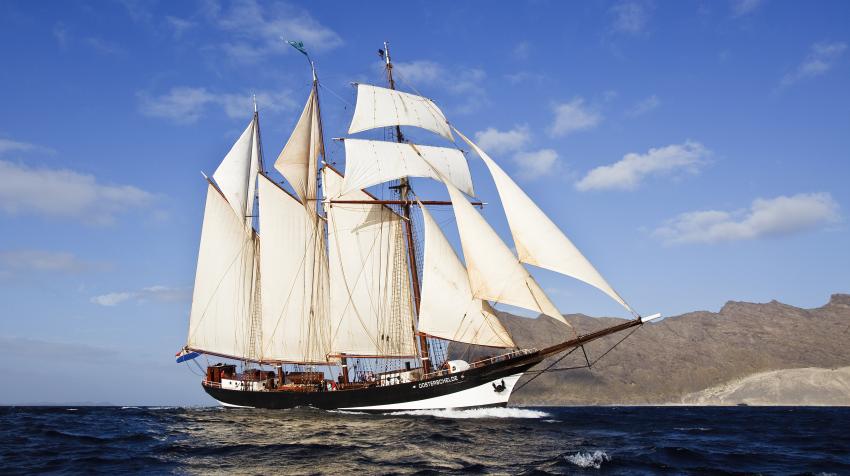
The DARWIN200 Global Voyage
About the author, stewart mcpherson.
Stewart McPherson is Co-founder and Project Leader of DARWIN200. He is the award-winning author of over 35 natural history books and presenter of numerous wildlife documentaries. He leads dozens of expeditions across the world each year and has discovered 35 new species.
14 April 2023
The nineteenth-century voyage of HMS Beagle and the adventures of Charles Darwin have generated some of the richest stories in the history of science, ones filled with excitement and discovery. When the young naturalist boarded the ship in 1831 to sail around the world, neither he nor anyone else could have imagined how significant the experience would prove to be.
Darwin’s voyage seeded his theory of evolution by natural selection, which is regarded as one of the most important ideas in the history of human thinking. Yet Darwin would be astonished by the changes to the planet that have taken place over the last two centuries, and by the ongoing threats that are reshaping our world.
It is with this in mind that on 14 August 2023, the two-year DARWIN200 Global Voyage will begin aboard the 50-metre long, historic Dutch tall ship Oosterschelde .
Darwin was only 22 years of age when he set sail on the life-changing journey, famously stating that it was by far the most important event in his life; in fact, it would determine the course of his entire career. The aim of the DARWIN200 Global Voyage is to create a similarly transformative experience for 200 of the world's brightest young environmentalists, who have the potential to become the science, technology, engineering and mathematics (STEM) and conservation leaders of tomorrow and the catalysts that will change the future of planet Earth for the better.
A decade in the making, the DARWIN200 project centres on inspiring a new wave of exceptional environmental leaders by training and empowering some of the world’s top young (from 18 to 25 years of age) conservationists. As “Darwin Leaders”, these young people are being selected based on their accomplishments aimed at making the world a better place. These 200 Darwin Leaders are the inspiration behind the project’s name.
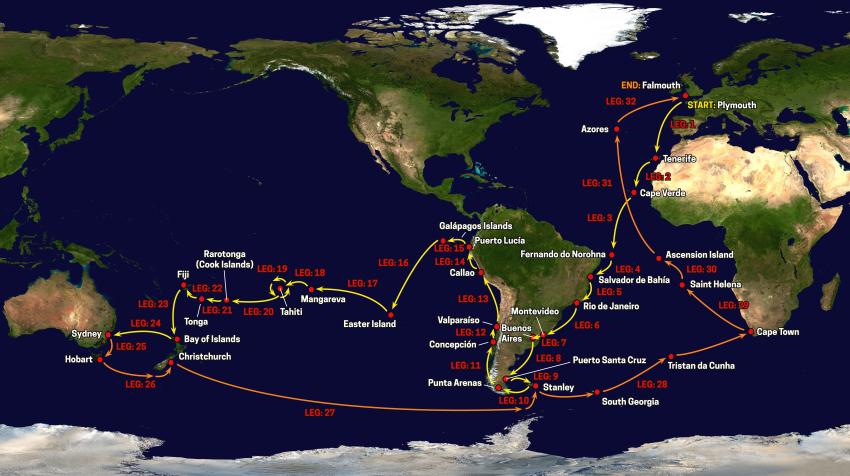
We are therefore seeking young conservationists with an irrepressible passion for preserving the natural world, who have already achieved great things under their own initiative as a result of their insatiable drive to make the planet a better place.
Some of our group have already been identified, and they all have truly impressive stories to tell. As teenagers they have set up nature reserves, replanted forests, rehabilitated ecosystems and spearheaded conservation efforts to save entire species.
Once assembled, the DARWIN200 will join the Oosterschelde in the same ports that Charles Darwin visited. They will be partnered with local conservationists to undertake an intensive training programme that is carefully designed to give them key skills they will need for a lifetime of conservation work.
One of the activities that each Darwin Leader will undertake will involve selecting an animal or a plant that Darwin studied to 1) study how the population of their chosen species has changed over the last two centuries, its current conservation status and existing threats; 2) examine and evaluate ongoing conservation efforts and establish whether they serve as sufficient safeguards (e.g. if the population is stable, in decline or recovering); and 3) design and carry out novel research and investigative work to develop new ideas for action to ensure that their chosen animal or plant species has a brighter future.

The intent is to give each Darwin Leader real-world experience in studying conservation subjects, build new skills in investigating and solving problems, and practice working in collaboration with experienced partners to develop new strategies to save wildlife.
Returning to their home countries, the Darwin Leaders will become environmental decision makers and drivers of change. Their careers will likely span the next 50 years, and working in countries across the globe, they will change the planet for the better as the living legacy of the DARWIN200 project. Just imagine what these young people will accomplish!
Onboard Oosterschelde, as it follows in Beagle’s wake, teams of young researchers will study ocean plastics and coral reef health, and undertake surveys of seabirds, whales and dolphins. The data collected will form part of a citizen-science outreach project, in which students and members of the public will be able to take part and analyse results and findings.
Every week for 100 weeks during the voyage, an immense platform of interactive experiments, research projects, STEM activities, lectures and Q&A sessions will be beamed live to audiences across the globe.
Participation in these weekly events, which will be known as “The World’s Most Exciting Classroom”, will be freely available to all. The programme of activities and resources is intended to engage millions of students and members of the global public.
DARWIN200 brings together an exceptional team, including some of the world’s most experienced conservationists, involving patrons Jane Goodall and Sylvia Earle, and key supporter Sarah Darwin (Charles Darwin’s great-great-granddaughter). Supported by a network of conservation groups from around the world, DARWIN200 will facilitate the two-way transfer of skills and knowledge between conservationists across the globe.
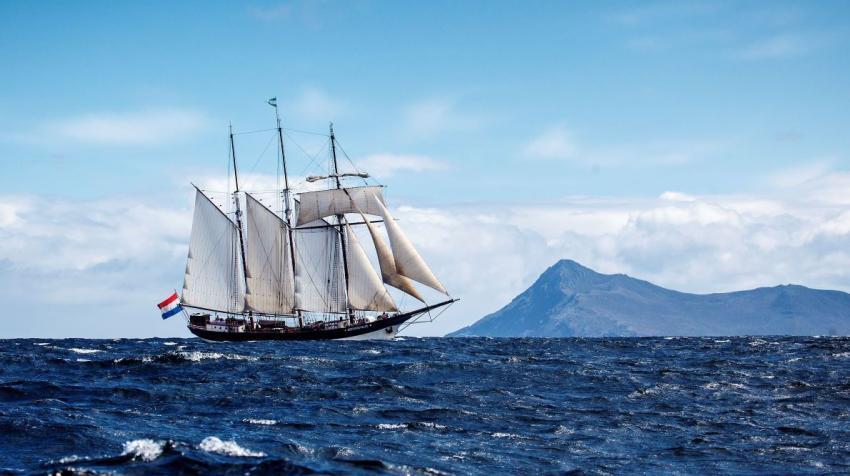
To test systems and perfect each part of the project, we undertook 20 weeks of test voyages sailing around the United Kingdom in 2021 and 2022 ahead of the start of the upcoming, two-year global expedition. The 40,000-nautical-mile route does include a few stops Darwin didn’t visit, and, for logistical reasons, Oosterschelde will return from Australia via Cape Horn rather than the Indian Ocean. But aside from these differences, DARWIN200 will visit every major port at which Charles Darwin made landfall.
Recent conservation projects have shown us time and again that it is not too late to remove many of the threats facing the natural world—if we act now. We can restore ecosystems and pull vulnerable species back from the brink of extinction. All we need is to mobilize passion and inspire change.
Under the tagline, “Change the World”, DARWIN200 aims to drive action for conservation, reinvigorate young people’s passion for discovery and learning, and ultimately, instil hope. By empowering and upskilling tomorrow’s generation, we can create a better future for the amazing natural world around us.
The UN Chronicle i s not an official record. It is privileged to host senior United Nations officials as well as distinguished contributors from outside the United Nations system whose views are not necessarily those of the United Nations. Similarly, the boundaries and names shown, and the designations used, in maps or articles do not necessarily imply endorsement or acceptance by the United Nations.
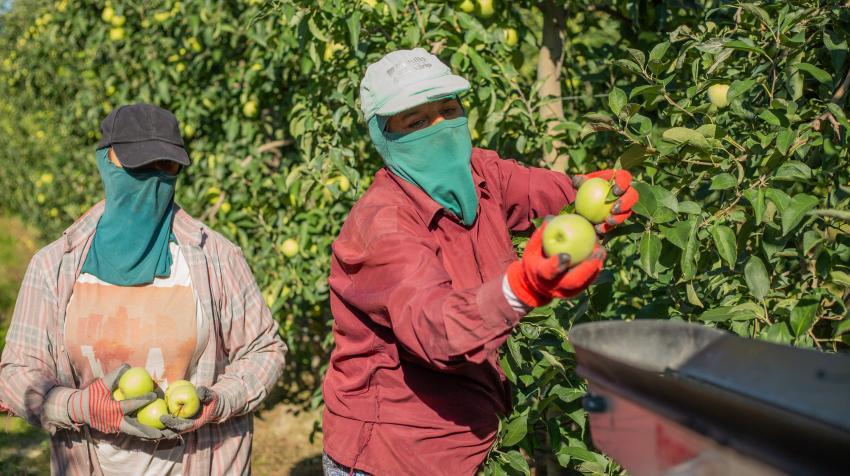
Keeping Food Safe, Even in Unexpected Situations
Food safety is everyone’s business and all of the players along the production chain can do their part.

A Chronicle Conversation with Pradeep Kurukulasuriya (Part 1)
In April 2024, Pradeep Kurukulasuriya was appointed Executive Secretary of the United Nations Capital Development Fund (UNCDF). The UN Chronicle took the opportunity to ask Mr. Kurukulasuriya about the Fund and its unique role in implementing the 2030 Agenda for Sustainable Development. This is Part 1 of our two-part interview.

Cultural Diversity in the Digital Age: A Pillar for Sustainable Development
Two important issues affecting the protection and promotion of cultural diversity deserve our attention: the question of discoverability of local and national content, and the impact of generative artificial intelligence (AI).
Documents and publications
- Yearbook of the United Nations
- Basic Facts About the United Nations
- Journal of the United Nations
- Meetings Coverage and Press Releases
- United Nations Official Document System (ODS)
- Africa Renewal
Libraries and Archives
- Dag Hammarskjöld Library
- UN Audiovisual Library
- UN Archives and Records Management
- Audiovisual Library of International Law
- UN iLibrary
News and media
- UN News Centre
- UN Chronicle on Twitter
- UN Chronicle on Facebook
The UN at Work
- 17 Goals to Transform Our World
- Official observances
- United Nations Academic Impact (UNAI)
- Protecting Human Rights
- Maintaining International Peace and Security
- The Office of the Secretary-General’s Envoy on Youth
- United Nations Careers

Charles Darwin and the Voyage of the Beagle
Charles Darwin’s scientific career began humbly. In 1831, and in the teeth of a gale, the HMS Beagle , a British warship, left Devonport, England, for an expedition to map the South American coastline and to carry out chronometer surveys all over the globe. Darwin embarked as a naturalist, although he had no formal training and had recently left Cambridge University because he grew disinterested in his studies. But he was a very sharp observer of the natural world, and he lived at a time when a revolution in thinking was going on. Scientists were feverishly re-examining age-old questions, such as how old was the Earth? How did various features of the planet form? How old and diverse was Earth’s animal life?
Darwin was also fortunate that the Beagle took him to the Galapagos Islands, where he observed various animals and birds that had evolved in an isolated environment. His observations led him to his famous theory of natural selection. According to Darwin’s theory, variations within species occur randomly and the survival or extinction of an organism is determined by its ability to adapt to its environment. (Another young naturalist of the time, Alfred Russell Wallace, had independently come to similar conclusions about evolution and natural selection.)
Darwin also made important observations about the geology of the islands and coastlines he visited. He proposed a theory about the formation of atolls. Atolls are coral reefs that form small islands that enclose a lagoon. They are found mostly in the Pacific. An example is Bikini Atoll located northwest of Hawaii. Darwin proposed that the foundation for the atoll was a volcano that was sinking because of its weight. As the volcano sinks, coral reefs that rim the volcano grow upwards. As long as the rate at which corals grow kept up with how fast the island was sinking, then small coral islands would remain in a ring around the now sunken volcano.
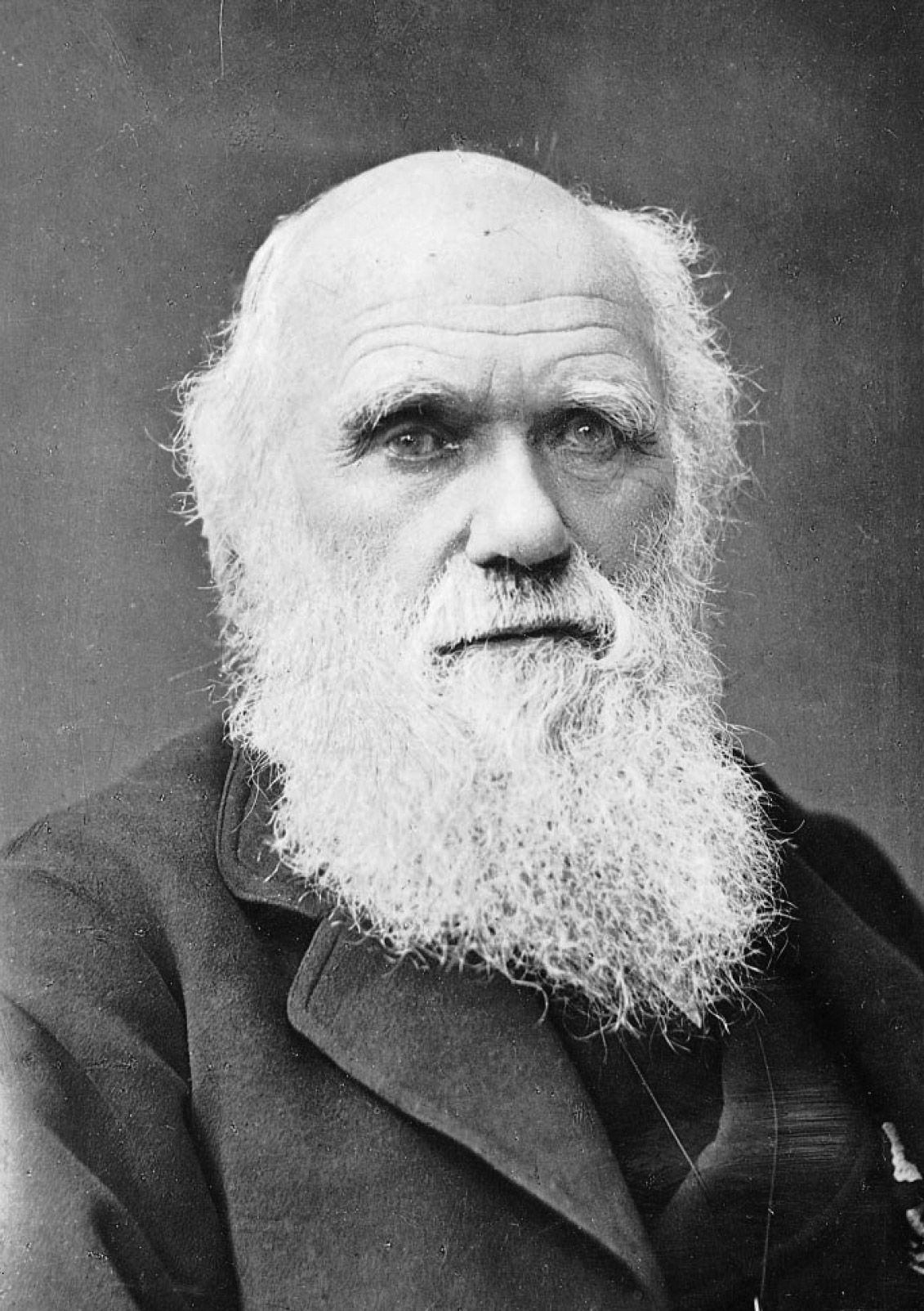
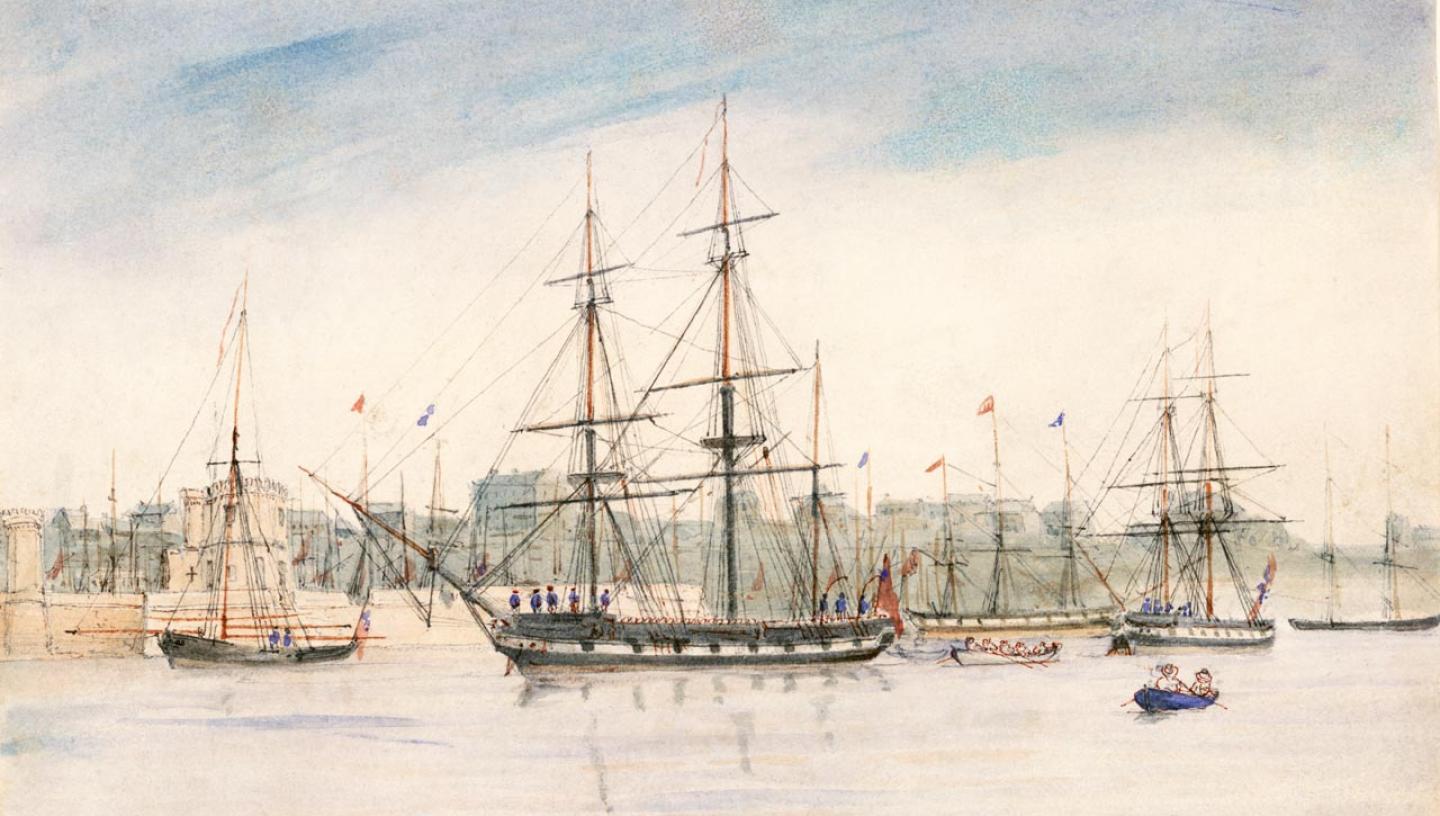
Discover more about the ship that took Charles Darwin around the world
Beagle was a Royal Navy ship, famed for taking English naturalist Charles Darwin on his first expedition around the world in 1831–36.
Beagle was launched at Woolwich Dockyard, London, in 1820. She was originally a 10-gun brig sloop, but as there was no immediate active use for her, she was refitted and allocated as a surveying vessel, under the command of Captain Robert FitzRoy. Her most famous passenger was the English naturalist Charles Darwin, who wrote about his five-year expedition aboard her in his travel memoir, The Voyage of the Beagle .
What exploratory voyages did Beagle go on?
Beagle 's first voyage of exploration was to South America, surveying Patagonia and Tierra del Fuego between 1826–30. The second voyage (1831–36) took her to South America and then around the world. Darwin was on board during this voyage, which became one of the most famous and important voyages of exploration ever made. Beagle 's third and final voyage (1837–43) surveyed large parts of the Australian coast.
How big was Beagle ?
The Beagle measured just 27 metres long and seven metres wide, and weighed 235 tons. She underwent a number of improvements throughout her life on the seas. For example, her hull was reinforced and a mizzen-mast (a third mast) was added to make her more manoeuvrable in shallow coastal waters.
What scientific equipment did she carry?
The Beagle voyages under Captain Robert FitzRoy saw the use of scientific technology such as theodolites, chronometers and barometers used to provide accurate survey information for new charts and, equally important, meteorological data and weather forecasting.
The Darwin voyage was the first time the Beaufort wind scale was used for wind observations. The crew also undertook various experiments and, despite some disappointments, they produced useful results. They were especially successful in the measurement of earthquakes during experiments in 1835.
What happened to Beagle ?
She was transferred to the coastguard in 1845 and moored on the River Roach in Essex. She was renamed WV7 – Watch Vessel 7 – in 1859. In 1870 she was sold off to be broken up.
Discover more about Charles Darwin .

- The Project
- The Voyages
- Rebuilding HMS Beagle
- Science Programme
- Learning Programme
- History Timeline
Second Voyage
- Around the World

The second voyage of HMS Beagle
The second voyage of HMS Beagle from 1831 to 1836 has become one of the most significant voyages of exploration in maritime history. Explore her route using our map. Click through to find out about some of the scientific observations made along the way. Note: to reduce repetition, the passage of HMS Beagle around South America has been simplified.

CAPE VERDE ISLANDS
January 1832
Darwin was excited by his first port of call, where he started making comprehensive notes, observations and collections on a wide range of environmental features despite the barren nature of the landscape. It was here that he first realised the opportunities that would be afforded to him by the voyage in terms of geology and natural history.
Darwin observed atmospheric dust in the Cape Verde Islands and considered its origins:
“the atmosphere is generally very hazy … chiefly due to an impalpable dust, which is constantly falling, even on vessels far out at sea. … It is produced, as I believe, from the wear and tear of volcanic rocks, and must come from the coast of Africa.”*
He also observed the habits of marine animals and collected many specimens. He wrote in detail about two molluscs — the sea slug Aplysia and cuttlefish (octopus). Both creatures have colourful defence mechanism, which Darwin observed and noted in detail. Sea slugs release a coloured fluid that stains the water around it. The cuttlefish has a similar defence mechanism, and are also known as the chameleons of the sea for their use of camouflage to avoid predators.
Find out about atmospheric science , ocean science and geology on our science pages.
*Darwin, C. R. Voyages of the Adventure and Beagle Vol. III. Journal and remarks. 1832–1836. (Henry Colburn, 1839); via van Wyhe, J. (ed.) The Complete Work of Charles Darwin Online ( http://darwin-online.org.uk , 2002).
Contact Us Shop Terms and Conditions Privacy Cookie Policy
The HMS Beagle Project is managed by the HMS Beagle Trust, a registered charity. Reg No: 1126192. Reg Office: Yelverton House, St John Street, Whitland, SA34 0AW, Wales. Website managed by WebAdept UK . Copyright © HMS Beagle Trust.
IMAGE CREDITS
Devonport, CC source: Nilfanion, Wikimedia Commons . Cape Verde, courtesy Melanie Hanvey. Fernando Noronho, CC source: Roberto Garrido, Wikimedia Commons . Salvador da Bahia, CC source: Toluaye, Wikimedia Commons . Ilha Redonda, Abrolhos, CC source: Amnemona (Marina C. Vinhal), Wikimedia Commons . Rio de Janeiro, CC source: Breogan67 at the German language Wikipedia, Wikimedia Commons . Rio de la Plata, CC source: Earth Sciences and Image Analysis Laboratory, NASA Johnson Space Center, Wikimedia Commons . Mount Hermoso, CC source: Simona.cerrato, Wikimedia Commons . Glacier Alley, Beagle Channel, CC source: Dianne Pike, Flickr . Falkland Islands, CC source: Apcbg, Wikimedia Commons . Maldonado, CC source: Hph at the German language Wikipedia, Wikimedia Commons . Rio Negro, CC source: Gswarlus, Zhermen Salvatore, Wikimedia Commons . Sierra de la Ventana, CC source: Mauret, Wikimedia Commons . Rio Parana, CC source: Wikimedia Commons . Rio Uruguay, CC source: squeakymarmot, Wikimedia Commons . Rhea in Patagonia, CC source: Jeremy Vandel, Wikimedia Commons . Puerto San Julian, CC source: Msacla, Wikimedia Commons . Rio Santa Cruz, CC source: James Cadwell, Wikimedia Commons . Puerto Hambre, CC source: Pablomontt, Wikimedia Commons . Valparaiso, CC source: Pablo Trincado, Wikimedia Commons . Chiloe Island, CC source: Melinka, Wikimedia Commons . Valdivia, CC source: Joralt, Wikimedia Commons . Bahia de Concepcion, CC source: eutrophication&hypoxia, Wikimedia Commons . Andes, Mendoza Province, CC source: Alexis Lê-Quôc, Wikimedia Commons . Coquimbo, CC source: Ale1898, Wikimedia Commons Copiapo Valley, CC source: sergejf, Wikimedia Commons . San Lorenzo Island from Callao, CC source: David Almeida, Wikimedia Commons . Bartolome Island, Galapagos, courtesy Melanie Hanvey. Tahiti, French Polynesia, courtesy Melanie Hanvey. Bay of Islands, New Zealand, CC source: Fuadounet, Wikimedia Commons . Sydney Harbour, Australia, CC source: Peter from Riyadh, Saudi Arabia, Wikimedia Commons . Mount Wellington, Tasmania, CC source: arctanx. tk, Wikimedia Commons . King George Sound, Albany, Australia, CC source: Hughesdarren, Wikimedia Commons . Cocos Islands, CC source: PalawanOz, Wikimedia Commons . Mauritius, CC source: Simisa, Wikimedia Commons . Cape Town, South Africa, CC source: Matthias Kniese, Wikimedia Commons . Jamestown, Saint Helena, CC source: Mejuto, Wikimedia Commons . View from Green Mountain, Ascension Island, CC source: LordHarris, Wikimedia Commons . Recife, Brazil, CC source: Wikimedia Commons . Pico Alto, Terceira, Azores, CC source: José Luís Ávila Silveira/Pedro Noronha e Costa, Wikimedia Commons . Falmouth Harbour, CC source: Thu Ya Win, Wikimedia Commons .
Accept cookies?
We use cook ies to give you the best online experience and to show personalised content and marketing. We use them to improve our website and content as well as to tailor our digital advertising on third-party platforms. You can change your preferences at any time.
Popular search terms:
- British wildlife
- Wildlife Photographer of the Year
- Explore the Museum
Voyage of HMS Beagle (1831-1836)

Hudsonian godwit, Limosa haemastica , from Captain FitzRoy’s collection.
Some of our most famous specimens were collected by Charles Darwin and Captain Robert FitzRoy during the round-the-world voyage of HMS Beagle between 1831 and 1836.
Accepted on board as a gentlemanly companion for Captain Robert FitzRoy (1805-1865), Darwin carefully investigated the geology and zoology encountered during the long surveying mission, keeping detailed notebooks and also collecting specimens.
Overall, he collected nearly 500 bird skins, together with further birds preserved in spirit, various bird parts and a small number of nests and eggs.
Allowed to dispose of them to the institution of his choice, Darwin gave the vast majority of his collection to the museum of the Zoological Society of London, where the specimens were examined by the renowned ornithologist John Gould (1804-1881). Thirty-nine new species and subspecies of bird were subsequently described, mostly by Gould.
The most famous of the discovered species are undoubtedly the Galapagos finches, commonly known as Darwin’s finches. These are often credited as the inspiration that led to Darwin formulating his ideas on evolution. However, it was Gould that recognised that the finches were closely related; Darwin originally recorded them as being from a range of different bird families.
The birds that did attract Darwin’s interest in the Galapagos were several new varieties of mockingbird, later confirmed by Gould as new species. It was the differences that Darwin noticed between the mockingbirds on different islands that were certainly a crucial part of the evidence that led him to the conclusion that species may change.
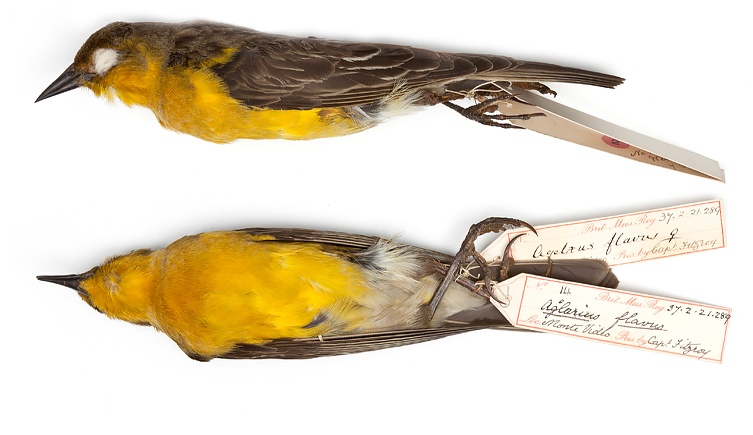
Saffron cowled Blackbird collected by Captain FitzRoy

Type specimens of Galapagos mockingbirds, collected by Charles Darwin in 1835.
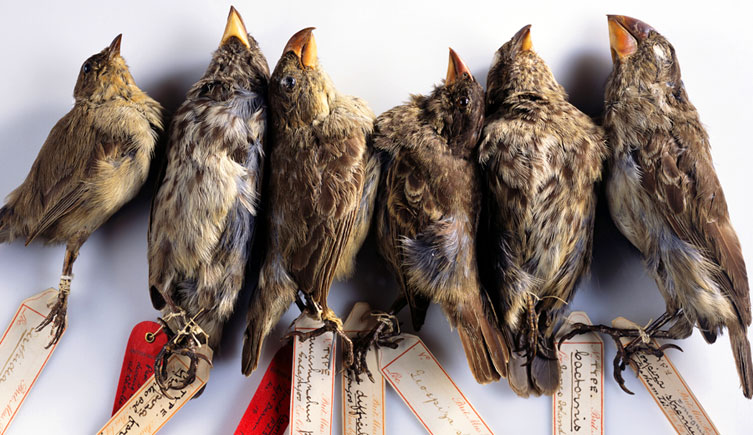
A line-up of Charles Darwin's finch specimens from the Galapagos Islands.
Moving collections
In 1855, the Zoological Society of London's museum was broken up and the collections sold. The then British Museum purchased a significant number of them, particularly type specimens, but Darwin’s Beagle bird specimens nevertheless were widely dispersed across many public and private collections.
Over time, more specimens reached the Museum amongst donated private collections, making it the largest single collection of Darwin’s Beagle birds with nearly 200 specimens. The remainder of known specimens are spread across seven other collections, but nearly half the original collection remains unaccounted for.
FitzRoy’s collection
Captain FitzRoy himself was tasked with gathering specimens and several other crew members were also involved in collecting, assisting both Darwin and FitzRoy.
As a representative of the Royal Navy, FitzRoy’s collections were not considered his own to dispose of, and were consequently presented to the then British Museum.
FitzRoy’s surviving bird collection also numbers nearly 200 specimens, but this represents almost the entire original collection.
Research is presently underway in the Bird Group to trace the history of FitzRoy’s birds, in particular to link them back to surviving archives in order to restore their full data. It is fascinating to compare Darwin’s and FitzRoy’s collections and examine the similarities and differences between them. We hope eventually to understand the role that FitzRoy’s collection may have played in helping Darwin develop his revolutionary ideas.
We are examining the similarities and differences between Darwin’s and FitzRoy’s collections to determine the role that FitzRoy’s collection may have played in helping Darwin develop his revolutionary ideas.
Looking for a specimen?
The bird collection is being digitised
Search for a specimen
Senior curator, any questions .
If you would like to use any specimens for research
Contact the curator
Related information.
- Ornithological knowledge during the voyage of HMS Beagle (Darwin Online)
- The story of Darwin’s Galapagos mockingbirds
- Full details of Charles Darwin’s bird collection from the voyage of the Beagle

Accessing the collections
Scientists and collections management specialists can visit the collections and borrow specimens for research.
Collections management
Our duty is to provide a safe and secure environment for all of our collections.
Thank you for visiting nature.com. You are using a browser version with limited support for CSS. To obtain the best experience, we recommend you use a more up to date browser (or turn off compatibility mode in Internet Explorer). In the meantime, to ensure continued support, we are displaying the site without styles and JavaScript.
- View all journals
- Explore content
- About the journal
- Publish with us
- Sign up for alerts
- News Q&A
- Published: 16 July 2014
Take a virtual voyage into Darwin's library
- Anna Simmonds
Nature ( 2014 ) Cite this article
477 Accesses
118 Altmetric
Metrics details
A science historian describes how he reconstructed the collection of texts the naturalist used aboard the HMS Beagle .
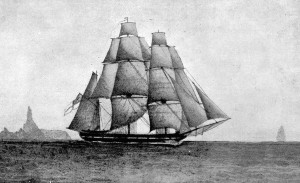
In his celebrated journey around the world on the HMS Beagle from 1831 to 1836, Charles Darwin collected a plethora of information on the geology, animals, plants and people he encountered — observations that later helped him to develop his theory of natural selection. Darwin himself gave credit to the Beagle in his opening line in On the Origin of Species , "When on board H.M.S. 'Beagle,' as naturalist, I was much struck with certain facts."
The cabin where Darwin worked and slept also housed the ship’s library, which he used for both reference and inspiration in his research. The library was dispersed at the end of the voyage, and its contents have been unknown. Now, 178 years later, science historian John van Wyhe of the National University of Singapore has reconstructed a virtual version of Darwin’s library , by cataloguing all of the printed sources Darwin made reference to in his travel notes.
The virtual library comprises 404 volumes, totalling more than 195,000 pages. Now it is possible for anyone to browse or search the library for quotations, places, people and species. Part of a broader project called Darwin Online , the library “provides an unprecedented insight into the journey that changed science and our understanding of the world”, says van Wyhe.
Van Wyhe, who specializes in the history of evolutionary science and is the author of Dispelling the Darkness: Voyage in the Malay Archipelago and the Discovery of Evolution by Wallace and Darwin , talked with Nature about the Beagle library project.
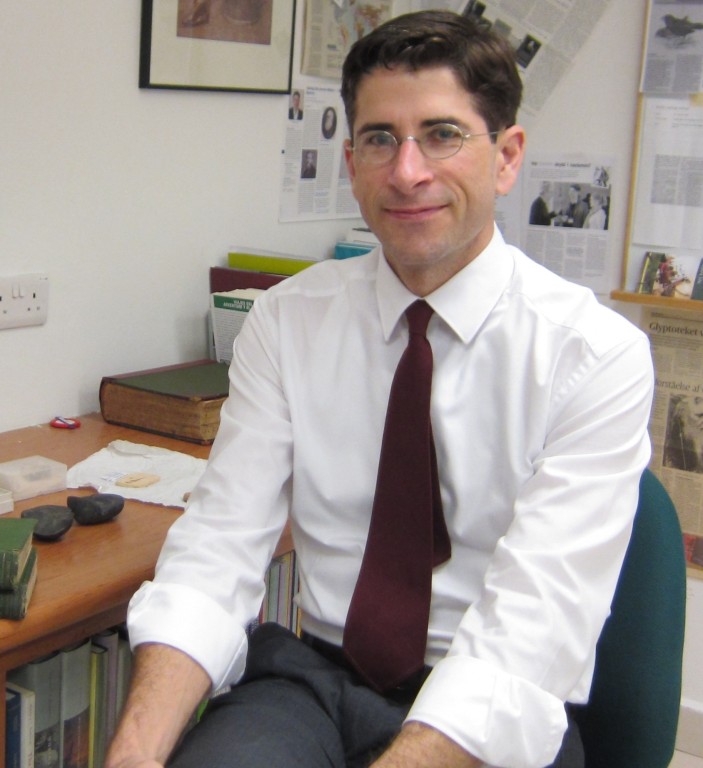
How did you come up with the idea for this project?
I’ve never heard of this being done before. I had this idea when I was editing the Beagle notebooks several years ago, I think in 2006, because I was searching Google Books to try to identify things that were in his notebooks. You think you can read a word, but you’re not sure. But if you search for it and find it is a word and it’s in a scientific book that he had, then you know you’re on to something. At that time I thought: “If only I could search through the Beagle library!” Searching through Google Books is very inaccurate because it’s very rough and includes millions of irrelevant books, whereas with the Beagle library, we’ve got the right ones. We’ve also had them transcribed — which was very expensive — so they’ll be very accurate and high quality for researching. In a way, I see this not as a project that’s finished but as a beginning. People can now really start doing interesting things with this library.
How is the library going to be useful for researchers?
It is already being used by scientists and historians, but it’s also of interest to the general public. Darwin has such a wide appeal, and there’s nothing more romantic and exciting about Darwin’s life than the voyage of the Beagle . We’re practically giving you the whole ship right here. Until now, people have read what he wrote and read his book, his notes, his diary and his letters, but in a way you're picturing him still in isolation, in a bit of a black hole. Now, we’re putting him back in the context in which he was living.
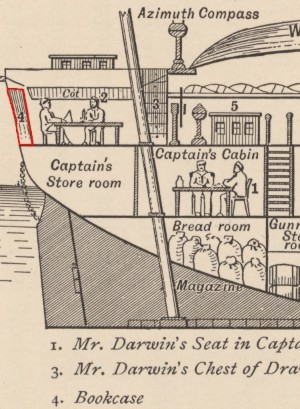
What was the highlight of the project for you?
I think what stands out for me are the images. When you think of a library, you tend to think of books and texts, but what I saw as the library began to be assembled, was that, wow! this is also an art gallery, full of thousands of beautiful drawings and illustrations and maps. It’s incredible. That’s why I made a special section on the website for the illustrations . Otherwise you would never see them, because they’re scattered across all these books. I had them pulled out so you can see what Darwin was seeing, and this was a major part of his inspiration.
Were there any unexpected findings?
All of this is a bit of a detective story. You have to go with what was written down to know whether Darwin or anyone else on the ship used a book or read it. I think my favourite one was the last book to be identified. It’s from a line in one of his field notebooks, which I published in 2009, but a word was mis-transcribed. It’s a horrible scrawl — his handwriting was terrible, so we didn’t know what it said. In going over that material for the Beagle library project, I finally cracked it. What it said was “Shenstone’s prose”. William Shenstone was a poet, a sort of forerunner of the romantics — and gosh, what an unexpected book for Darwin to have been reading!
Can we see Darwin’s annotations on the manuscripts in the library?
Almost none of these books are the actual copies that Darwin read. These are the same books, but almost the entire library was dispersed at the end of the voyage and we don’t know what happened to those copies. The Cambridge University Library [in the United Kingdom] has a small number of copies that belonged to Darwin — a good chunk of his personal library when he died ended up there — so some of those books were with him on the voyage.
How sure are you that these volumes were actually in the Beagle library?
It’s the nature of such of a project that some evidence is suggestive but not conclusive, so we have some references that are there with a little question mark behind them, indicating that these were possibly on the Beagle but we can’t say for sure. That’s all you can do with a project like this.
What’s next for the Darwin Online project?
Let me catch my breath first! There is something that we’ve been working on, off and on, for a few years now — to reconstruct a catalogue of Darwin’s personal library throughout his life. I do get e-mails every month or so from people asking, “Did Darwin own this or that?” So it would be useful if we could publish a list and say: “Here’s everything Darwin ever had in his own collection.”

You can also search for this author in PubMed Google Scholar
Related links
Related links in nature research.
Linnaeus's Asian elephant was wrong species 2013-Nov-04
Letters of Alfred Russel Wallace go online 2013-Jan-24
Darwin's body of work evolves into online archive 2005-Oct-26
Nature Special: Darwin 200
Related external links
Charles Darwin's Beagle Library
Darwin Online
Rights and permissions
Reprints and permissions
About this article
Cite this article.
Simmonds, A. Take a virtual voyage into Darwin's library. Nature (2014). https://doi.org/10.1038/nature.2014.15568
Download citation
Published : 16 July 2014
DOI : https://doi.org/10.1038/nature.2014.15568
Share this article
Anyone you share the following link with will be able to read this content:
Sorry, a shareable link is not currently available for this article.
Provided by the Springer Nature SharedIt content-sharing initiative
Quick links
- Explore articles by subject
- Guide to authors
- Editorial policies
Sign up for the Nature Briefing newsletter — what matters in science, free to your inbox daily.
If you're seeing this message, it means we're having trouble loading external resources on our website.
If you're behind a web filter, please make sure that the domains *.kastatic.org and *.kasandbox.org are unblocked.
To log in and use all the features of Khan Academy, please enable JavaScript in your browser.
Big History Project
Course: big history project > unit 5, read: gallery — voyage of the beagle.
- ACTIVITY: The Voyage of the Beagle
- READ: Darwin, Evolution, and Faith
- READ: Crick, Watson, and Franklin
- READ: Henrietta Lacks’ Immortal Legacy - Graphic Biography
The Route of the HMS Beagle
Charles darwin, finches of the galapagos, the galapagos islands, ancient animals of argentina, tierra del fuego, want to join the conversation.
- Upvote Button navigates to signup page
- Downvote Button navigates to signup page
- Flag Button navigates to signup page

IMAGES
VIDEO
COMMENTS
Beagle, British naval vessel aboard which Charles Darwin served as naturalist on a voyage to South America and around the world (1831-36). The specimens and observations accumulated on this voyage gave Darwin the essential materials for his theory of evolution by natural selection.. HMS Beagle (the third of nine vessels to bear this name) was launched on May 11, 1820, at Woolwich, the site ...
The plants and animals encountered on the five-year voyage of the 'Beagle' provided the foundation for Charles Darwin's theory of evolution. The Beagle off the coast of Tierra Del Fuego in 1834 ...
Voyage of the HMS Beagle. Darwin traveled the world for five years collecting samples then returned to England to analyze his samples. Idea for Use in the Classroom. Charles Darwin set sail on the ship HMS Beagle on December 27, 1831, from Plymouth, England. Darwin was 22 years old when he was hired to be the ship's naturalist.
Charles Darwin's five-year voyage in the early 1830s on H.M.S. Beagle has become legendary, as insights gained by the bright young scientist on his trip to exotic places greatly influenced his masterwork, the book " On the Origin of Species ." Darwin didn't actually formulate his theory of evolution while sailing around the world aboard the ...
The Voyage of the HMS BeagleOverviewCharles Darwin (1809-1882) was among the most influential scientists who ever lived. He began his career as a naturalist aboard the HMS Beagle, on its five-year surveying mission around South America and across the Pacific. Darwin's work was to make the Beagle's journey one of the best documented surveys of its time.
Part of the Darwin exhibition. In 1831, Charles Darwin received an astounding invitation: to join the HMS Beagle as ship's naturalist for a trip around the world. For most of the next five years, the Beagle surveyed the coast of South America, leaving Darwin free to explore the continent and islands, including the Galápagos.
A map of Charles Darwin's South American journeys from February 1832 to September 1835. The circumnavigation of the globe would be the making of the 22-year-old Darwin. Five years of physical hardship and mental rigour, imprisoned within a ship's walls, offset by wide-open opportunities in the Brazilian jungles and the Andes Mountains, were ...
This steady stream of science-driven accomplishments has sustained American (indeed, global) public interest in our nation's space agency. Today, we are witnessing a renaissance of U.S. space ...
The Voyage of the Beagle. In 1831, when Darwin was just 22 years old, he set sail on a scientific expedition on a ship called the HMS Beagle.He was the naturalist on the voyage. As a naturalist, it was his job to observe and collect specimens of plants, animals, rocks, and fossils wherever the expedition went ashore. The route the ship took and the stops they made are shown in the Figure below.
The nineteenth-century voyage of HMS Beagle and the adventures of Charles Darwin have generated some of the richest stories in the history of science, ones filled with excitement and discovery.
21st Century. Charles Darwin's scientific career began humbly. In 1831, and in the teeth of a gale, the HMS Beagle, a British warship, left Devonport, England, for an expedition to map the South American coastline and to carry out chronometer surveys all over the globe. Darwin embarked as a naturalist, although he had no formal training and ...
The Voyage of the Beagle is the title most commonly given to the book written by Charles Darwin and published in 1839 as his Journal and Remarks, bringing him considerable fame and respect. This was the third volume of The Narrative of the Voyages of H.M. Ships Adventure and Beagle, the other volumes of which were written or edited by the ...
The second voyage (1831-36) took her to South America and then around the world. Darwin was on board during this voyage, which became one of the most famous and important voyages of exploration ever made. Beagle's third and final voyage (1837-43) surveyed large parts of the Australian coast. How big was Beagle?
HMS Beagle was a Cherokee-class 10-gun brig-sloop of the Royal Navy, one of more than 100 ships of this class.The vessel, constructed at a cost of £7,803, was launched on 11 May 1820 from the Woolwich Dockyard on the River Thames.Later reports say the ship took part in celebrations of the coronation of King George IV of the United Kingdom, passing under the old London Bridge, and was the ...
Taxonomy is the science of defining and describing species. There are approximately 1.8 million species known to modern science, some of which were discovered by Darwin and his taxonomist collaborators during and after his voyage on HMS Beagle. Despite centuries of effort, however, we have only scratched the surface; there are probably at least ...
The second voyage of HMS Beagle. The second voyage of HMS Beagle from 1831 to 1836 has become one of the most significant voyages of exploration in maritime history. Explore her route using our map. Click through to find out about some of the scientific observations made along the way. Note: to reduce repetition, the passage of HMS Beagle ...
Voyage of HMS Beagle (1831-1836) Hudsonian godwit, Limosa haemastica, from Captain FitzRoy's collection. Some of our most famous specimens were collected by Charles Darwin and Captain Robert FitzRoy during the round-the-world voyage of HMS Beagle between 1831 and 1836. Accepted on board as a gentlemanly companion for Captain Robert FitzRoy ...
In December 1831, the naturalist Charles Darwin set sail on a five-year, round-the-world journey aboard the HMS Beagle. During the trip, Darwin documented many fascinating species, which helped him develop his theory of evolution. This theory states that species gradually change over many generations.
A science historian describes how he reconstructed the collection of texts the naturalist used aboard the HMS Beagle. Frontispiece from Charles Darwin's A Naturalist's Voyage Round the World (1912 ...
HMS Beagle was the ship of Royal Navy. It was used by Charles Darwin to sail around the world during 1931-1932. He traveled around the world from 26 December 1831 to 27 February 1832. During voyage, he came across rich variety of animal and plant species. He found many similar species on different location due geographical isolation.
Tracking the HMS Beagle to its end. Although many historic ships are preserved in museums or at docks, the Beagle, the vessel employed for Charles Darwin's voyage to the Galápagos Islands and around the globe, has apparently lain in a muddy grave in the east of England for the past 130 years. At a public lecture last week in London at the ...
For its first voyage, the replica, crewed by 30 scientists and sailors, will sail around the world following the path of the original Beagle in the 1831-36 voyage that inspired Darwin's On the Origin of Species.After that, scientists will be able to use the new Beagle for research, primarily on climate change, says McGrath. One project he is considering is using the Beagle's logs to compare ...
The Route of the HMS Beagle. The HMS Beagle, captained by Robert FitzRoy, set sail from Plymouth Sound in England on December 27, 1831. Initially planned as a two year survey expedition, the voyage lasted nearly five years and circumnavigated the world. Darwin recorded his observations in journals and later published them in 1839.